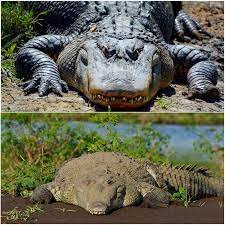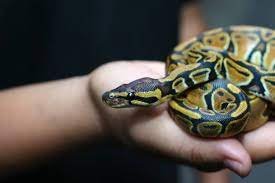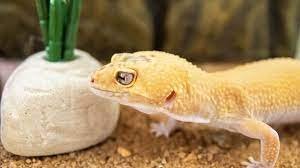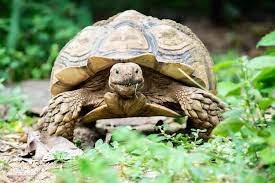Given that they are omnivores, box turtles eat a wide variety of foods. They eat a variety of foods, including fruit, vegetables, insects, fish, and meat. Below is a detailed explanation of the diet of the box turtle. The box turtle is a common pet turtle. The turtles are sociable and active, with an air of calmness about them. On top of that, they’re relatively little. The combination of these qualities makes them ideal pets. For a chelonian to stay in a healthy weight range, it is essential to feed them a diet of high-quality meals at the appropriate amounts, intervals, and types.
What do Box Turtles eat?

Since they are omnivores, captive box turtles need a varied diet of both plant and animal matter.
More than half of their diet should consist of insects, invertebrates, and dead animal debris due to their predominantly carnivorous nature. Their diet should consist of around 30% of vegetable matter, such as leafy greens, which are packed with nutrients. Fruits of various kinds should make up the balance of the diet.
It is typical for them to go out and forage for food. Actively foraging, box turtles will chomp down on pretty much everything they can get their mouths on by extending their necks and biting down hard. Regular meals are taken many times a week by adults. Frogs, carrion, slugs, snails, mushrooms, insects, earthworms, crayfish, gastropods, myriapods, and other dead animals are some of their favorite foods.
They’ll consume the wild equivalents of many domesticated fruits when they’re out there. You can find some excellent examples in mayapples, elderberries, blueberries, strawberries, black cherries, and frosted grapes. Leafy greens and some fruits should make up the rest of their diet.
What do Box Turtles eat in the Wild?

The best diet for a box turtle, as we discussed before, is one that mimics its natural food in the wild as much as possible.
The normal diet of a wild box turtle includes:
- Earthworms
- Snails
- Spiders
- Caterpillars
- Grasshoppers
- Millipedes
- Crayfish
- Fish
- Frogs
- Lost harvest (often over-ripe or rotten)
- Berries
- Flowers
- Grass
- Cacti
- Mushrooms
Vegetables To Feed To A Box Turtle

Your box turtle will enjoy a variety of fresh vegetables. Vegetables of all kinds are safe for box turtles to eat. However, you must pick the best ones to ensure the well-being of the box turtle.
For its diet, consider the following list of vegetables. All varieties of squash are acceptable. Box turtles can eat raw row squash in the summer, but throughout the winter, you’ll need to shred and simmer the squash first. Box turtles have no trouble digesting cooked and shredded zucchini.
Acorn
Butternut
Pumpkin
Zucchini
Peppers, or bell, peppers
Carrots (You have to shred them first) (You have to shred them first)
A vegetable known as green beans
Cactus pad and fruit of the okra plant (You have to get rid of all the spines)
Those scrumptious yams ( You have to cook and shred, or grate first and then microwave quickly)
Potatoes
Corn
Tomatoes
Broccoli
Cauliflower
Beets
Cucumber
Romaine lettuce (it’s not particularly nutrient-dense and it can cause diarrhea. As a result, you should set a maximum allowance.
For the health of box turtles, nothing beats a diet rich in dark green, leafy vegetables. There are vegetables that are more nutritious than others. Romaine lettuce is the finest variety. However, I have already warned that feeding a box turtle an excessive amount of Romaine lettuce can be dangerous. Other types of lettuce that are rich in nutrients include Bibb, escarole, and red leaf. Avoid iceberg lettuce since it is not particularly healthy. If you have a box turtle, you should feed it these lush greens.
Tossed collards
Green mustard
Parsley
Escarole and endive
Greens from dandelions
The greens of beets
Spinach
Kale
Turnip
Watercress
Clover
Fruits

Due to their high sugar content, fruits should be given to pets only on rare occasions. If you must, try to limit the amount of fruit in the turtle’s diet to about 10 percent.
Apples
Banana
Blackberries
Blueberries
Cantaloupes
Cherries
Crabapples
Packed with antioxidants, fresh figs are a healthy snack.
Grapes
Kiwis
Mulberries
Papaya
Peaches
Pears
Persimmons
Raspberries
Strawberries
Because many of the foods that wild box turtles eat aren’t available to captive ones, the usual diet of a box turtle in captivity differs greatly from that of a wild one.
Nonetheless, most box turtles will like and benefit from the meals on this list.
Captive box turtles get their nutrition from the following:
Carrots, shredded
Sautéed squash
A vegetable known as green beans
Chilled dog food
Berries
Melon (with the rind) (with the rind)
Mustard greens, dandelion greens, swiss chard, collard greens, and other leafy greens.
Plants and flowers such as geraniums, nasturtiums, hibiscus, and rose petals
Indulgent peppers
A vegetable known as green beans
Chicken that has been cooked
Eggs
Cholesterol-rich beef heart
Mealworms
Superworms
Worms of the earth and the creepy-crawly kind
Commercial box turtles eat pink mice and crickets.
Vitamin Supplements for Box Turtles

Finding a diet that provides all the nutrients your turtle needs and that he’ll really eat can be challenging. Vitamin supplements are helpful for most confined turtles, especially those that spend their lives inside, according to several specialists. Every few days, you should sprinkle a high-quality reptile multivitamin supplement onto your pet’s food.
Also, know 10 Best Pet Tortoise Breeds for Beginners – Everything Reptiles
Feeding a Box Turtle

Box turtles are most active and warm in the mornings and afternoons, so that’s when you should feed them. Box turtles of different ages require different feeding schedules and amounts of food.
Meals should be given to an adult box turtle at least three times a week, preferably every other day or every third day. If you are unsure of how often to give them, it is best to check with your veterinarian.
All box turtles, especially young ones, need to be fed every day and supplemented with vitamins and calcium at least three times weekly. Live foods, such as insects, can be left out for longer than 15–20 minutes if they are not being eaten quickly enough, but otherwise, all uneaten food should be removed after 15–20 minutes. There is no need to feed a hibernating box turtle during the winter months, but you should make sure he has access to water at all times.
Some turtles may need to be fed in a hide box if they are timid about humans. If you keep multiple turtles together, each one will need its own feeding area or plate, and you may need to separate them if one refuses to share.





